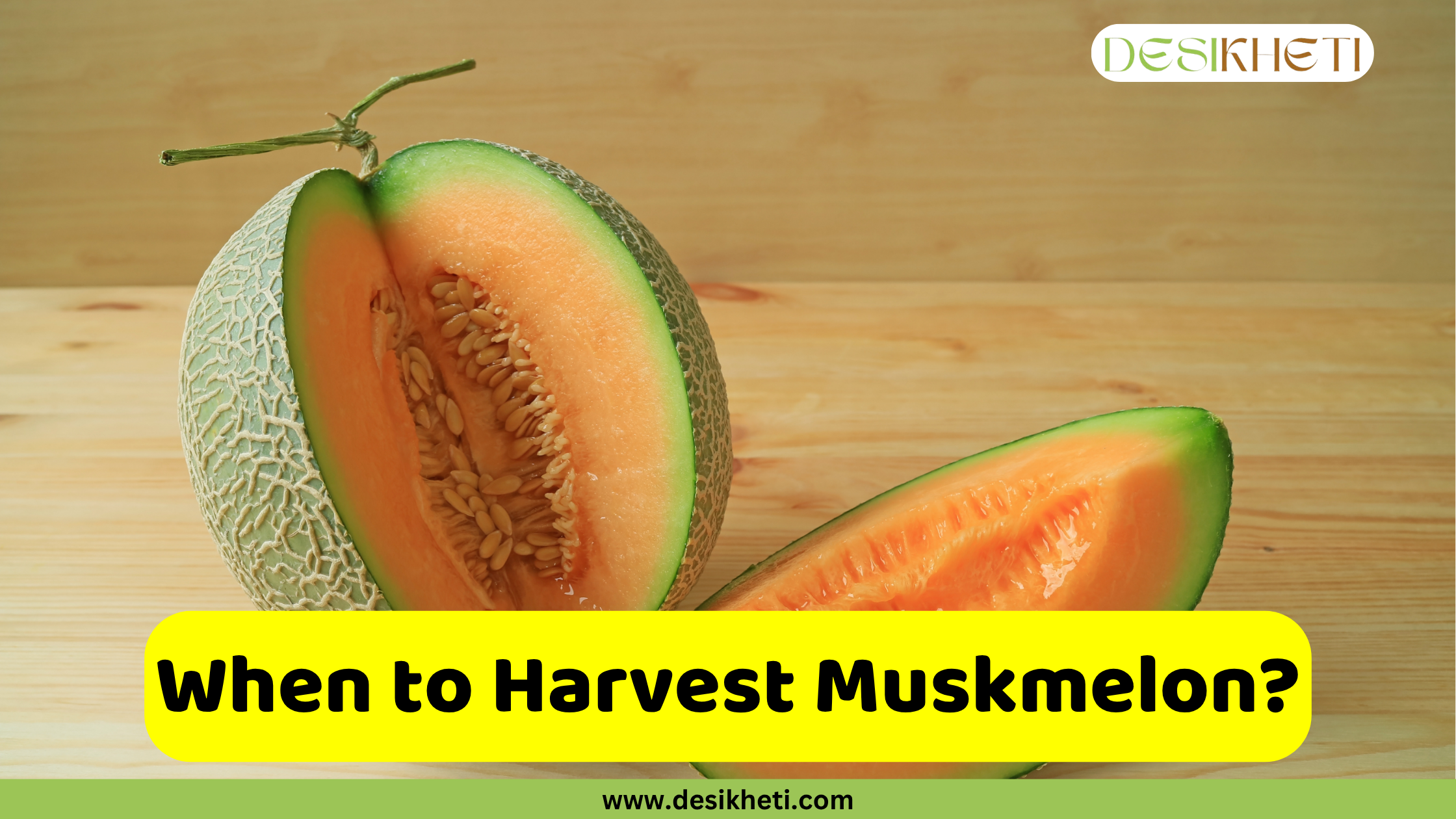Table of Contents
Introduction
Muskmelon is a popular summer fruit in India, loved for its sweet taste, refreshing juice, and cooling effect. However, the key to enjoying a quality fruit lies in harvesting the crop at the right stage of maturity. Picking too early can result in tasteless muskmelon fruit, while waiting too long may cause overripeness and reduce storage life. Identifying maturity is therefore very important for both local consumption and long-distance market transport of muskmelon.
Do you want to know the right stage for harvesting and the signs of fruit maturity? Then you are at the right place. In this blog, we share simple and practical methods you can use to check muskmelon fruit maturity in the field.
So, without further delay, let’s dive into the blog.
Check the Colour
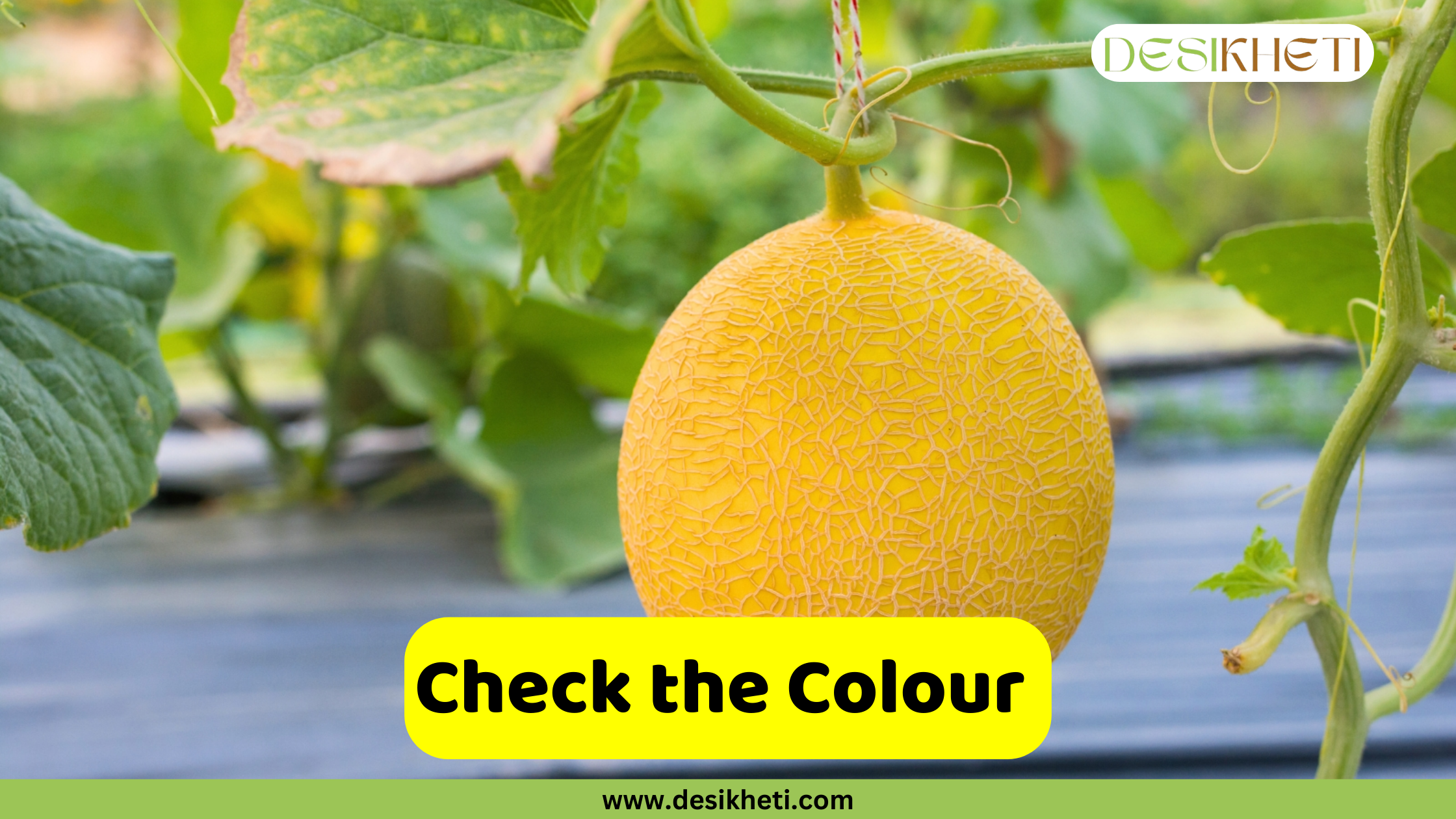
One of the first and most reliable signs that a muskmelon is ready for harvest is the change in the colour of its outer skin. As the fruit matures, the skin changes from green to a yellowish-green, golden-buff, or light brown shade, depending on the variety. This colour shift happens naturally and is easy to observe when the fruit is nearing harvest.
In most muskmelon varieties, the netting pattern (reticulation) on the skin also becomes more pronounced and rough as the fruit ripens. The skin between the netting lines may turn slightly golden, and the entire fruit looks brighter and more attractive.
Check the Stem “Slip Stage”
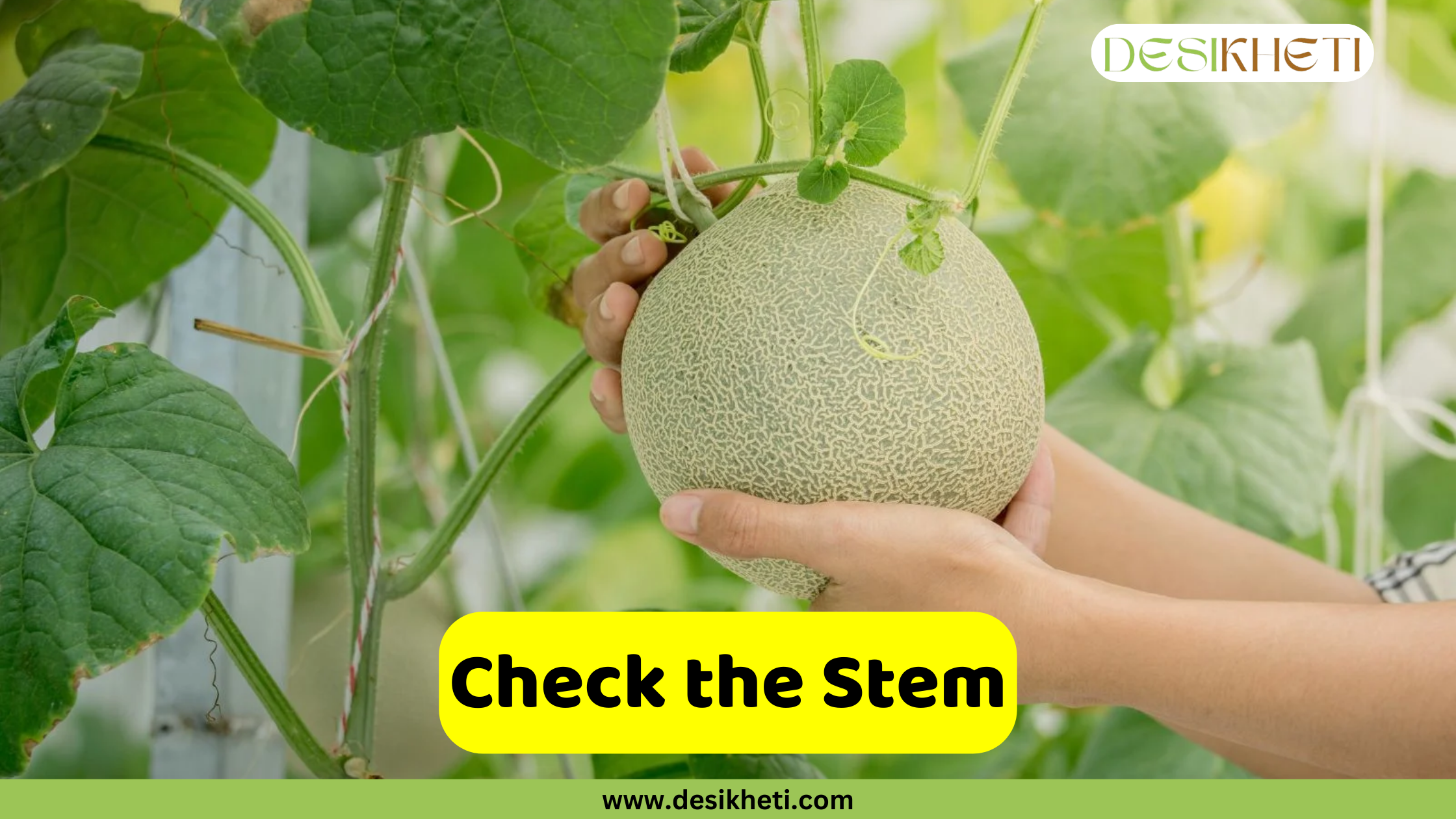
Another important way to identify if a muskmelon is mature for harvesting is by checking the stem where the fruit is attached to the vine. In most muskmelon varieties, a mature fruit slips off the vine naturally due to the formation of an abscission layer at the stem end. This natural detachment is called the “full-slip stage,” and it clearly indicates that the fruit is fully ripe.
When the muskmelon reaches the full-slip stage, you will notice that the stem starts cracking or weakening right where it joins the fruit. With just a gentle touch or lift, the fruit detaches on its own without applying any force. This is the ideal stage to harvest muskmelons for local markets, where consumers prefer fully ripe and sweet fruits.
However, for transporting to distant markets, it is better to harvest the fruit at the half-slip stage or even slightly earlier. At this point, the fruit is mature enough but still firm, allowing it to handle transport stress without rotting or overripening during transit.
However, it is important to remember that in non-slip varieties like Karanpur, there is no natural detachment from the vine. For such types, colour change is the main indicator of maturity.
Smell the Muskmelon
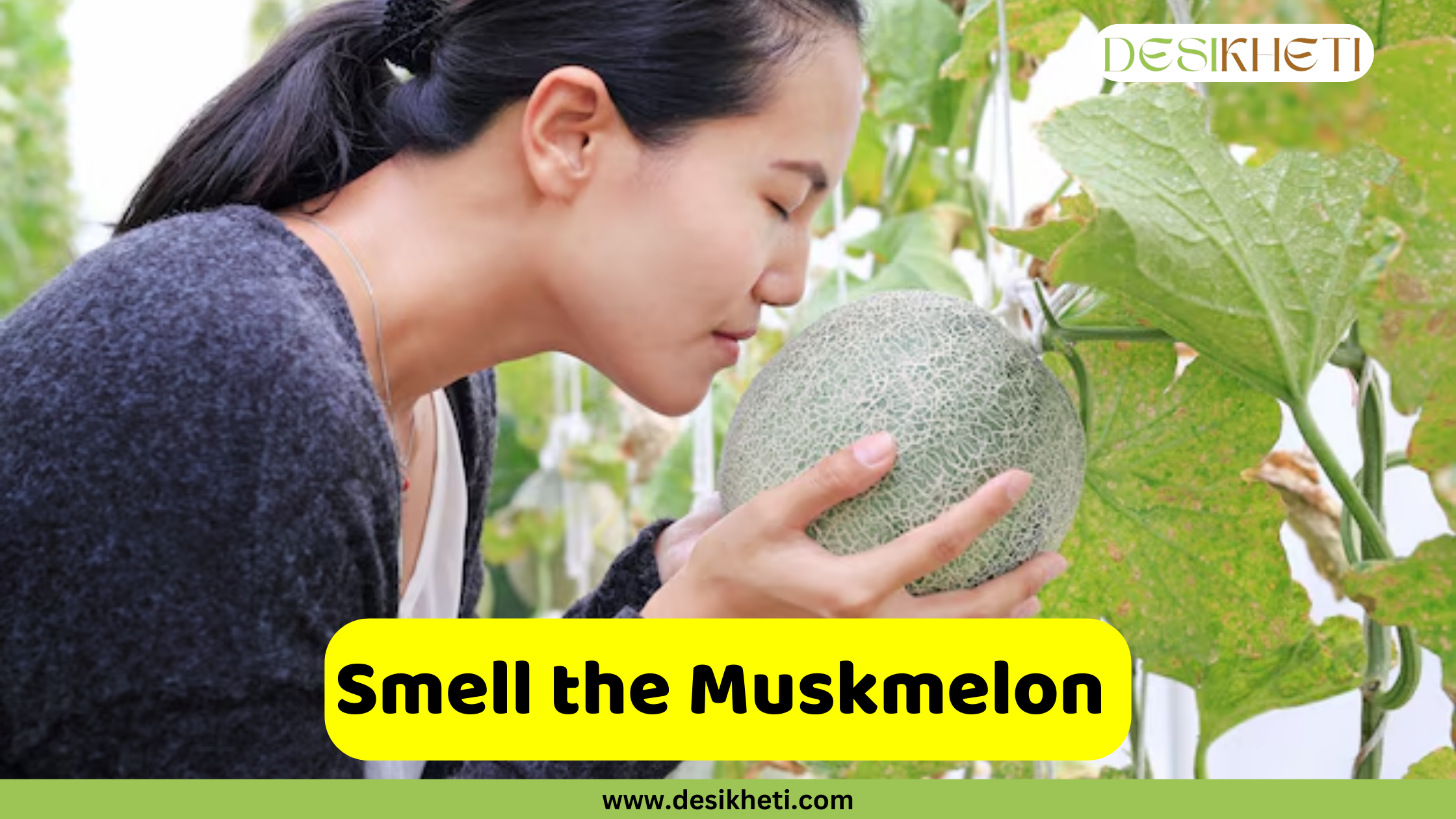
A simple and effective way to check if a muskmelon is ready to harvest is by using your sense of smell. As the fruit ripens, it starts giving off a strong, sweet, and musky aroma, especially from the blossom end (the end opposite the stem).T
his natural fragrance is a clear sign that the muskmelon has developed its full sugar content and is ready for picking. The stronger and sweeter the smell, the more mature the fruit is. This method works well for those who want a quick, non-destructive test.
If the fruit has no smell or only a faint one, it may still need a few more days to mature. On the other hand, if the smell is too strong or fermented, the fruit may be overripe.
Give It a Tap
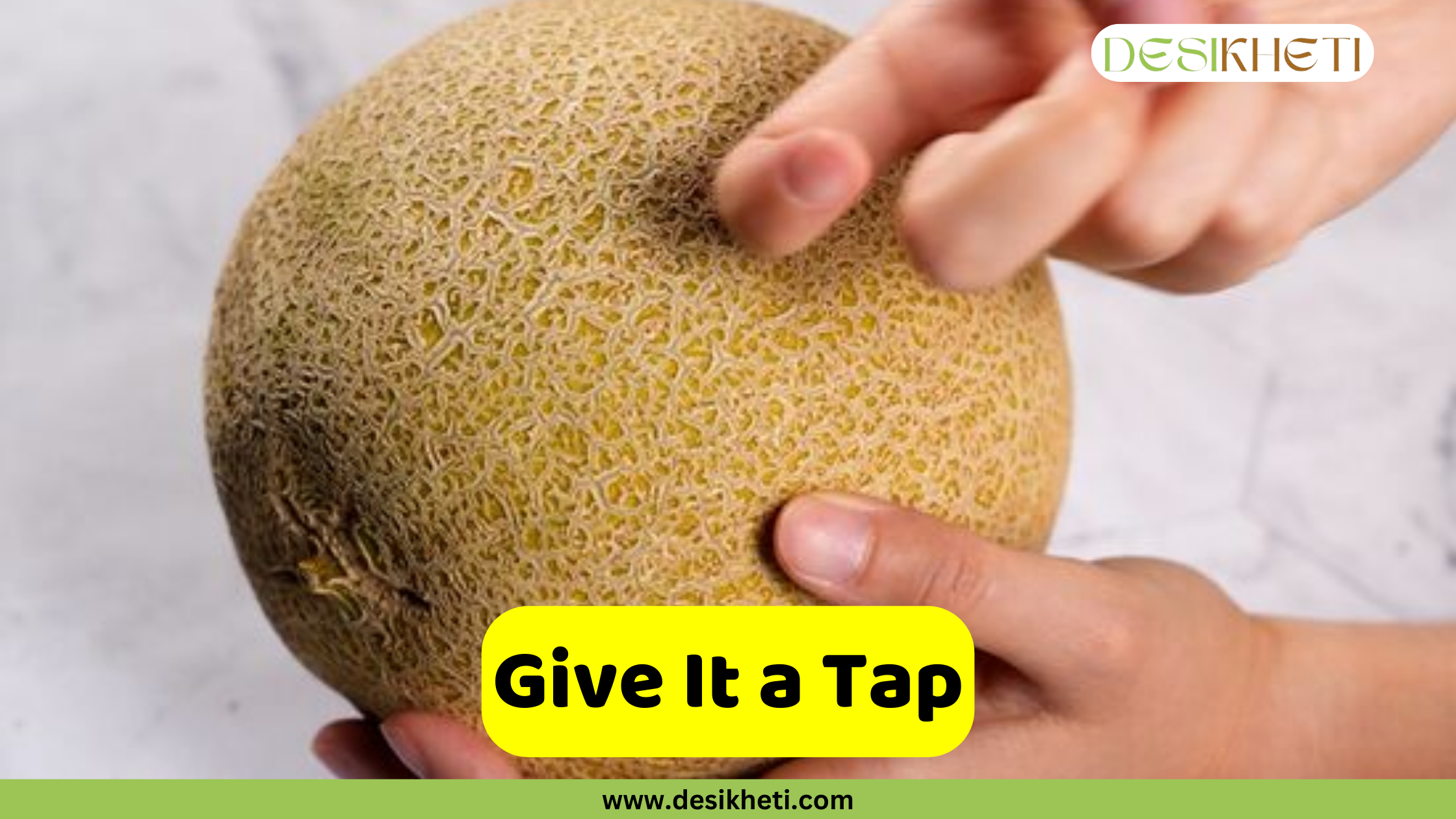
Tapping the muskmelon gently with your fingers is another traditional yet useful method to check its readiness for harvest. This technique is simple, quick, and requires no tools—just your ears and a little practice.
When you tap a mature muskmelon, it produces a deep, hollow sound. This indicates that the fruit has developed full internal flesh and water content, which is a sign of good ripeness. On the other hand, if the sound is sharp or metallic, the fruit is likely still immature and not ready for harvest.
Farmers across India often use this “thump test” in the field to quickly check multiple fruits without damaging them. Although not 100% accurate on its own, this method works well when combined with other signs like colour change, aroma, and the slip stage.
Check the Weight
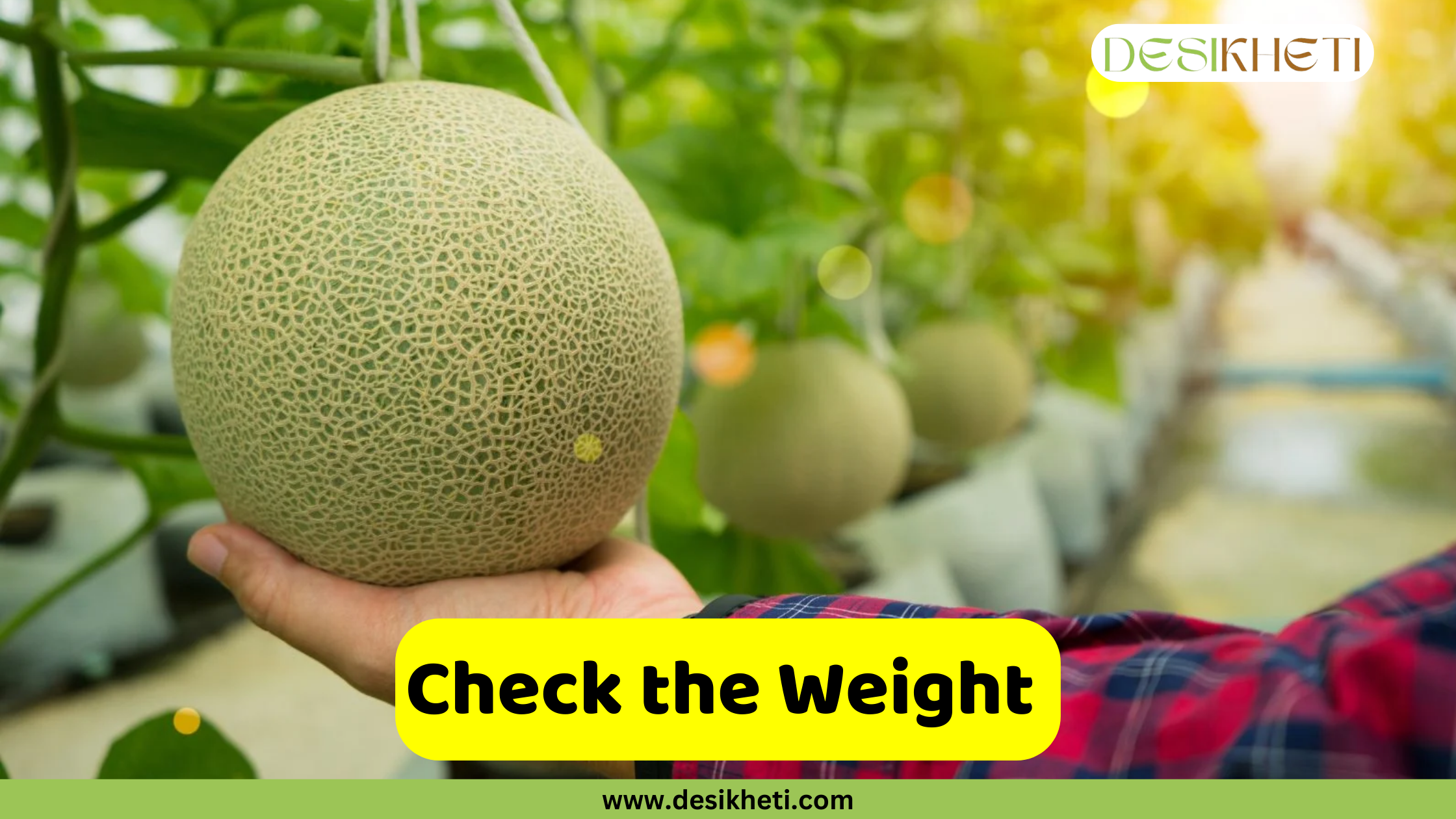
Another easy way to check muskmelon maturity is by feeling its weight. A ripe muskmelon feels heavier for its size, which means it is full of juice and has reached its proper sugar and water content.
When you lift two muskmelons of the same size, the heavier one is usually more mature. This method is especially useful when combined with other signs like colour, smell, and the slip stage. A lightweight melon may still be immature or underdeveloped inside.
Farmers and vendors often use this trick in the field and markets to quickly separate ripe fruits from unripe ones.
Days After Sowing and Flowering

Along with physical signs, keeping track of crop age is an important method to decide the right harvest time for muskmelon. Generally, muskmelon fruits are ready for picking about 90 days after sowing, depending on the variety and season.
More specifically, the fruit takes around 30 days from the time of fruit set to reach full maturity. Farmers who monitor flowering and fruiting stages can estimate harvest time more accurately using this information.
If you are growing early-maturing varieties, the crop may be ready a few days sooner. On the other hand, long-duration varieties might take slightly more time. Always keep a field notebook or calendar to note flowering dates, so you can calculate the right harvesting window.
This method is especially useful in situations where external signs like the slip stage or aroma are not obvious, as in the case of non-slip varieties like Karanpur. In such cases, knowing the days after flowering (DAF) becomes a reliable guide.
Check the Blossom End and Fruit Shape

Another useful way to identify muskmelon maturity is by gently pressing the blossom end of the fruit, the side opposite the stem. When the fruit is mature, this end becomes slightly soft to the touch. It should give a little when you press it with your thumb, but it should not feel mushy or too soft, as that may indicate overripeness.
Additionally, take a look at the overall shape of the fruit. A mature muskmelon is usually well-rounded, oval, or globe-shaped, depending on the variety. The fruit looks plump and full, with uniform netting patterns on the skin. Immature melons often appear slightly underdeveloped or uneven in shape.
These small but important signs of softness at the blossom end and proper shape can help confirm that the fruit has fully matured. They are best used together with other indicators like colour change, aroma, and the slip stage for accurate harvest timing.
By carefully observing changes in colour, checking the slip stage, using the smell and tap tests, feeling the weight, tracking crop age, and assessing blossom-end softness, farmers can accurately determine when the fruit is ready for harvest. With these practical methods, farmers can reduce losses, deliver high-quality produce, and build stronger market trust. Harvesting muskmelon at the correct maturity stage helps farmers ensure better taste, higher yields, and improved market returns.
FAQs on Muskmelon Maturity for Harvesting
1. What is the maturity stage of a muskmelon?
A. The maturity stage is when the fruit reaches full size, develops its characteristic netting, and emits a strong musky smell.
2. What is the half-slip stage of a muskmelon?
A. The half-slip stage is when the fruit partially separates from the stem, indicating it is nearly mature and ready for harvesting within a few days.
3. At what stage is muskmelon harvested?
A. It is usually harvested at the full-slip stage for local markets, while slightly earlier at the half-slip stage for long-distance transport.
4. How long does it take for melons to ripen?
A. Muskmelons generally take about 30–45 days after flowering to ripen, depending on the variety.
5. How long after flowering do melons grow?
A. Fruits typically develop and mature within 30–40 days after flowering, depending on the variety and climate.
6. Which soil is suitable for muskmelon?
A. Well-drained sandy loam or alluvial soils rich in organic matter are ideal for muskmelon cultivation.
7. Which vitamins are in muskmelon?
A. Muskmelon is rich in vitamins A, C, and folate, along with essential minerals like potassium and magnesium.
8. What nutrients are in muskmelon?
A. It contains water, dietary fiber, natural sugars, vitamin A, vitamin C, folate, potassium, and antioxidants.
9. What does muskmelon smell like?
A. A ripe muskmelon has a sweet, musky, and fruity aroma.
